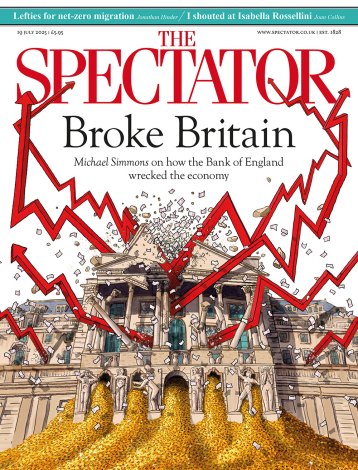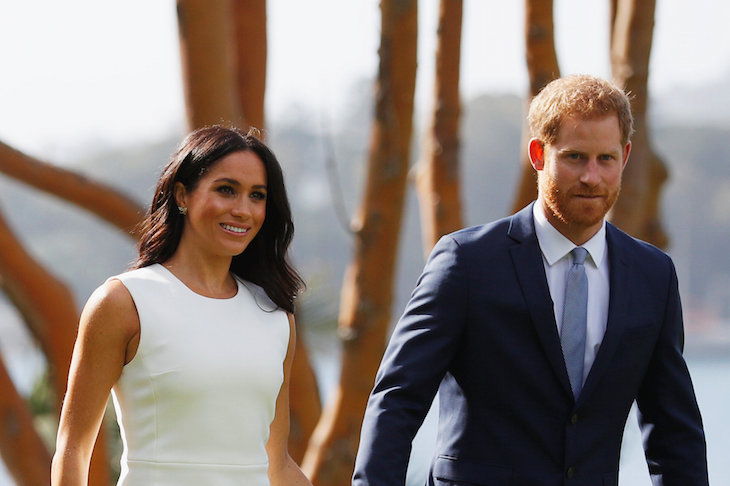Whether it was intended so or not, the decision by the Duke and Duchess of Sussex to choose Australia as the place to announce that they are expecting their first child was a public relations triumph. For years the royal family was criticised for having a tin ear when it came to reading and dealing with the public, but no one could say this now. The tone of the younger royals’ tour to the southern hemisphere has been one of approachability, without compromising the dignity of the positions which Harry and Meghan hold.
Their visit also runs counter to the conventional wisdom of some republicans — in Britain as well as Australia — that support for the monarchy is dependent on personal affection for the Queen and that the institution will be doomed upon her death. Now that Elizabeth II is, for reasons of age, no longer able to conduct long-haul tours, her grandchildren have achieved what her children never quite managed: to show that they have the ability to follow on and capture the support of the public where she leaves off.
Royal marriages have long been about survival — many throughout history have been about ending wars, uniting kingdoms or resolving hostilities between warring families. While the unions of Harry and Meghan, and William and Kate, are about none of those things, they have in their own way obeyed the same principle: they are marriages which have been instrumental in restoring the reputation of a royal family which was deep in the doldrums just a few years ago.
First, we saw a middle-class woman whisked — and welcomed — into royalty. Now, with Meghan, the world has witnessed a mixed-race woman similarly join the world’s best-known royal family. There has been no awkward match-making by courtiers, no attempt to block the prince’s choice of partner on the grounds of class, race or marital history. In 1936 the king’s love affair with an American divorcee nearly broke the royal family. In 2018 it has been accepted without a murmur. For the first time in decades the royal family looks in tune with the times — and without having to strain itself in order to do so.
It is good that it does. There is nothing to say that Britain, Australia or any other country has to have a monarchy. It would be perfectly understandable if Australia decided to break its monarchical ties with Britain. There are many who would argue that it would be an essential step in Australia’s coming of age, the point at which it would finally outgrow its colonial master. There are few in Britain who would seek to stand in the way of Australian republicanism.
Yet monarchy has proved remarkably durable in Australia. We are nearly a generation on from 1999, when Australians voted 55 per cent to 45 per cent to retain the monarchy, defying the wishes of a Constitutional Convention of appointed worthies. In the event, every state bar the Capital Territory rejected the proposed appointed presidency. There is little indication that the result would be any different now. While some polls have put support for a republic at just over 50 per cent, the polls in 1999, too, showed republicanism on course for victory. In the end, however, the public denied the political class what it wished for — which was its own aggrandisation.
That is the point about republicanism — in Britain, Australia and elsewhere. While it can seem notionally attractive, its appeal tends to wane when people realise what would almost certainly replace it: a party politician as head of state. ‘Would you like Britain to be a republic?’ is a question which is sure to elicit a different answer to ‘Would you like Tony Blair or David Cameron to be installed at Buckingham Palace and to swan around the world representing Britain?’ The current incumbents of the White House and the Elysée Palace do nothing to promote the cause of republicanism — one a narcissist and the other with the air of Napoleon. It is marked how modest, both in lifestyle and cost to the taxpayer, Elizabeth II — and all other monarchs of western democracies — seem in comparison.
The beauty of a constitutional monarchy is that it keeps politicians in their place — while still ensuring that ultimate political power lies with the people. For an elected leader, the presence of a monarch is a constant reminder that he or she is a servant of the state and that the election was a job interview, not a confirmation of personal power.
The institution of the monarchy and the character of the monarch are different things, of course. It is quite possible to be in favour of one and not the other. There are those who support the monarchy, but who do not look forward to Prince Charles becoming king.
Yet, following a rough patch in which the lives of the royal family seemed to descend at times into a bad soap opera, it has become easy to support both royals and monarchy alike. Republican sympathies are in abeyance in Britain — and on the evidence so far of the Duke and Duchess of Sussex’s tour to Australia, they are unlikely to triumph in the near future in that country either.






Comments